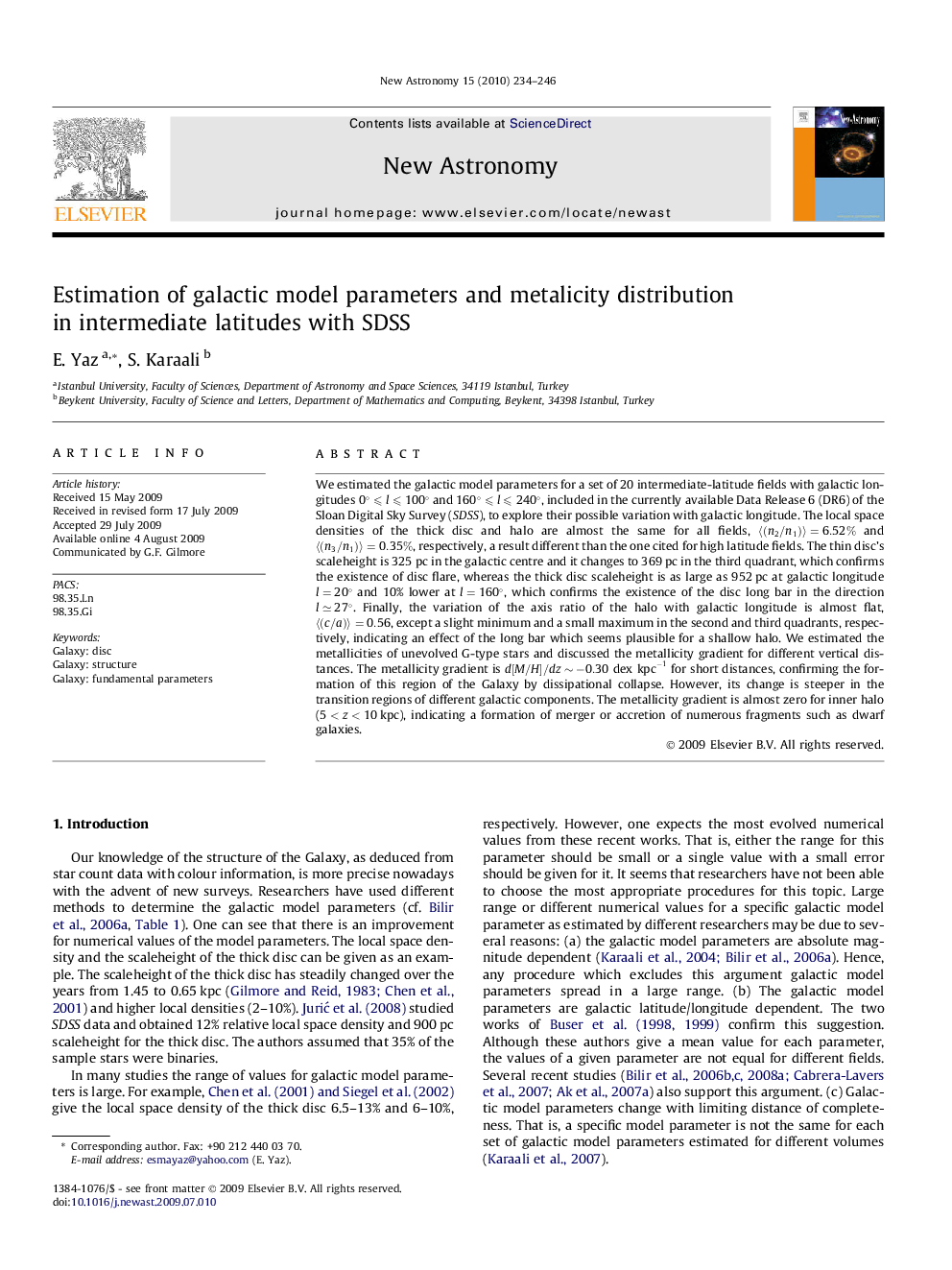| Article ID | Journal | Published Year | Pages | File Type |
|---|---|---|---|---|
| 1779577 | New Astronomy | 2010 | 13 Pages |
Abstract
We estimated the galactic model parameters for a set of 20 intermediate-latitude fields with galactic longitudes 0°⩽l⩽100° and 160°⩽l⩽240°, included in the currently available Data Release 6 (DR6) of the Sloan Digital Sky Survey (SDSS), to explore their possible variation with galactic longitude. The local space densities of the thick disc and halo are almost the same for all fields, ã(n2/n1)ã=6.52% and ã(n3/n1)ã=0.35%, respectively, a result different than the one cited for high latitude fields. The thin disc's scaleheight is 325 pc in the galactic centre and it changes to 369 pc in the third quadrant, which confirms the existence of disc flare, whereas the thick disc scaleheight is as large as 952 pc at galactic longitude l=20° and 10% lower at l=160°, which confirms the existence of the disc long bar in the direction lâ27°. Finally, the variation of the axis ratio of the halo with galactic longitude is almost flat, ã(c/a)ã=0.56, except a slight minimum and a small maximum in the second and third quadrants, respectively, indicating an effect of the long bar which seems plausible for a shallow halo. We estimated the metallicities of unevolved G-type stars and discussed the metallicity gradient for different vertical distances. The metallicity gradient is d[M/H]/dzâ¼-0.30dexkpc-1 for short distances, confirming the formation of this region of the Galaxy by dissipational collapse. However, its change is steeper in the transition regions of different galactic components. The metallicity gradient is almost zero for inner halo (5
Related Topics
Physical Sciences and Engineering
Physics and Astronomy
Astronomy and Astrophysics
Authors
E. Yaz, S. Karaali,
